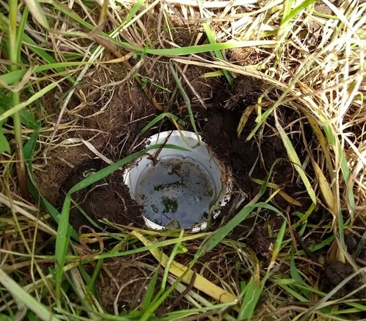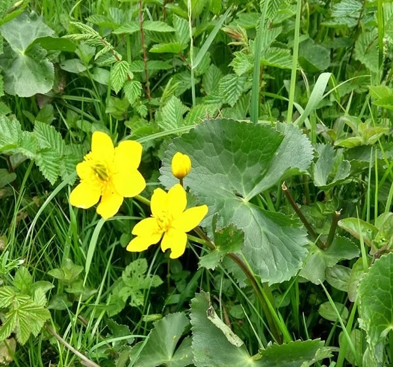Though the focus of LIFE Waders for Real is on breeding waders, the work we are conducting has the potential to improve conditions for the whole ecosystem from breeding songbirds to small aquatic invertebrates and wet grassland flora. As part of the LIFE Waders for Real project, it is important that we document any impacts our management has on the wider ecosystem. Conservation funds are increasingly limited and achieving ecosystem restoration alongside species conservation is better both for efficiently spreading these funds and for ensuring long-term recovery after project completion.
Ditch Invertebrates
Our team carry out dragonfly and damselfly surveys along sections of the river and ditch systems on all our hotspot sites. In 2018, the maximum number of individuals recorded on any survey was 5394, comprising of 25 different species, the most abundant species being the banded demoiselle (Calopteryx splendens). The scarce chaser (Libellula fulva), a nationally important species, was recorded 161 times. In addition to these transects, water quality testing, ditch invertebrate sampling and ditch vegetation surveying is also conducted. This survey work will allow us to document any changes as a result of our work to improve the condition of selected historic ditches and the recruitment of new taxa into newly created ones.
Terrestrial Invertebrates
Lapwing and their chicks can forage on aquatic and terrestrial – surface and soil - invertebrates in wet meadow grassland. Work on terrestrial invertebrates was started in 2018, due to an interest in developing a better understanding of lapwing chick diet and the invertebrate communities in our managed habitats. This work involves pitfall (below) and soil sampling and hours spent in the lab identifying sampled invertebrates to species level. As part of this work we are also investigating this impact of field management and habitat quality on this group. Our fingers are crossed for some interesting findings at the end of the LIFE Waders for Real Project.

Vegetation Communities
The Avon Valley remains one of the most extensive areas of unimproved wet grassland in the UK, with one of the most diverse flora communities of any UK river floodplain. Though in recent decades some of these grasslands have faced increasing agricultural pressure and changes to water management leading to increasing improvement. To assess meadow quality and impacts of our management we collect detailed vegetation data across our hotspot sites, and other sites in the Avon Valley these plots are repeated each year which allow us to monitor changes in the flora community as the project progresses. In addition, we also assess soil penetrability, floral community assemblage and vegetation structure. This work is giving us a better understanding of the vegetation community characteristics and habitat conditions for various breeding waders occupying the valley.
Indicators of good condition can be found in selected Avon Valley water meadows, species like Marsh Marigold (below), with its bright yellow flowers and dark, kidney shaped shiny leaves and Meadow Sweet with long-stalked feather-like leaves and dark stems.
